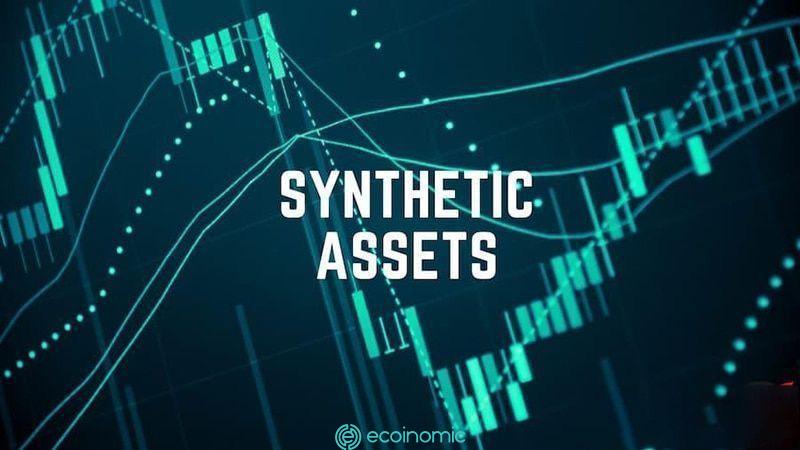Advertisement
What is synthetic asset?
Synthetic asset is Derivative financial instrument that tracks and provides the profit of an asset without requiring the holding of asset. Assets include Fiat currencies, stocks, bonds, commodities such as gold, silver,… and other digital assets.
In traditional financial market, derivatives are stocks or bonds that an investor can purchase and sell without owning the asset. Meanwhile, synthetic assets are tokens that digitally represent these derivatives.
Synthetic asset allows investors to use more financial tools than a single investment asset. To put it simply, synthetic assets are encrypted derivatives.

Benefits and risks of synthetic assets
Benefit
- Easy access and transfer: Investors are able to trade and transfer synthetic assets at will.
- No initialization permission is required: All users can participate in building a Synthetic Asset system on the blockchain.
- Expanding global liquidity pool: Converting derivatives to DeFi as synthetic assets allow the possibility of global, borderless trading.
- Borderless transactions: Blockchain assets such as ERC-20 tokens can be exchanged between standard cryptocurrency wallets.
- Independent of intermediaries: Data is stored on a distributed ledger, synthetic asset is decentralized and does not depend on the control of third party.
Risk
Besides the benefits, there are certain risks.
- Smart contract risk: Hackers can exploit smart contracts to attack synthetic asset.
- Oracle risk: Many synthetic assets operate on oracle mechanisms, so some potential risks may occur related to trust and the possibility of failure.
- Governance risk: Participants perform transactions that convert synthetic assets directly with smart contracts, without interference by third-party intermediaries.
- Platform risk: Transactions on the Ethereum platform and other blockchains can be disrupted during peak uptime with relatively high transaction fees.
Synthetic asset platforms
Universal Market Access (UMA)
UMA is a synthetic asset protocol that provides a custom contract template, allowing developers to issue and manage derivative assets through smart contracts on Ethereum.
Unlike traditional derivatives, contracts created using the UMA protocol are autonomous and do not require the control of intermediary regulators. UMA opens up access to global financial markets for all investors.
Investors need to lock cryptocurrencies such as ETH, BTC or stablecoins as collateral, then receive the corresponding synthetic tokens and have the right to track the prices of other underlying assets such as stocks, commodities or cryptocurrencies. The true value of synthetic asset depends on the value of the asset that the user collateralizes in the UMA protocol.
Synthetix
Synthetix is a protocol on Ehereum that allows investors to issue and trade synthetic assets on the P2P platform. Synthetix allows users to issue various synthetic assets including fiat, derivatives, cryptocurrencies,…
Sythetix’s ecosystem includes: synthetix trading platform, DApp – Decentralized Application that allows SNX holders to issue synths, and Dashboard – an overview of the ecosystem.
Synthetix adopts the operating model of DAO, SNX is governance token in the ecosystem. Investors can lock SNX as collateral, support synths positions to stake and profit from trading fees.
With over $150 million Synth released, Synthetix became the leading synthetic asset platform in DeFi. In particular, the market capitalization of sUSD, the platform’s stablecoin reached $100 million.
Synthetix primarily offers synthetic assets based on cryptocurrencies such as sETH and sBTC, as well as index-tokens such as sDeFi and sCEX.
Abra
Abra is a decentralized investment platform that allows users to use cryptocurrencies as collateral to create synthetic assets. Abra’s synthetic asset model takes advantage of multi-sig smart contracts based on Bitcoin (BTC) and Litecoin (LTC).
For example, if an investor wants to buy $1,000 worth of Google stock through Abra, the company will peg a user’s $1,000 BTC to Google’s share price. If Google increases or decreases, the equivalent amount of BTC will be added to or subtracted from the user’s contract.
Other platforms
Several other synthetic asset platforms are also developing such as FutureSwap, Morpher, Augur, DerivaDEX, DyDx and Opyn or Hegic.

The future of synthetic asset
Although synthetic asset is still in infancy, with the pace of blockchain and DeFi development, it will usher in the revolution of derivatives, decentralized finance and attract investors.
Transactions are entirely processed on a public blockchain system based on smart contracts, so synthetic asset offers the opportunity to diversify portfolios and increase access to promising investments with high liquidity.
Synthetic asset is expected to carry complex traditional financial products such as swaps, debt tokens, options contracts,… on the DeFi platform in the future. Synthetic asset models give cryptocurrency holders leverage to trade traditional financial products and derivatives while remaining in the digital ecosystem.
However, blockchain scalability is also one of the barriers for synthetic assets in particular as well as DeFi in general due to restrictions on transaction speed during peak periods and high transaction fees.
In the future, synthetic asset can be issued and traded on blockchain platforms with cheaper transaction fees and higher performance based on layer 2 alternatives.
















